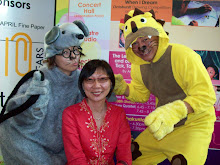For school librarians, it is important to know:
What is a call number ?
Every item in the library has its own address, the call number.
Fiction is shelved alphabetically by the author’s last name.
Non-fiction is shelved using a Dewey Decimal Classification number.
The Dewey decimal system groups materials on the same subject and on related subjects to make items easier to find on the shelves by using a combination of numbers and letters.
The Dewey system has ten main subject areas; each of these areas has ten divisions. These divisions are further divided--and then further divided.
Each division becomes more specific. The more numbers there are, the more specific the subject.
In this way, the Dewey classification system progresses from the general to the specific.
The final part of the non-fiction call number is often a letter/number code for the author or title, making the whole call number a unique identifier.
To learn more about DDC call number, visit the source of the above information at:
http://www.library.barrie.on.ca/research/tutorials/pdf/dewey.pdf
For libraries using cutter number for Author or Title code, please read the page:
"Let's Do Dewey-What is a call number?" at
http://www.mtsu.edu/~vvesper/dewey2.htm#What
Plucking the fruits of DDC is not difficult, if you are attentive enough.
If you like to have some one guiding your school librarians, just email
Dexterine Ho at
dexterine@yahoo.com
or
smho@e.ntu.edu.sg
You may like to visit:
List of schools with in-house workshops conducted by Dexterine Ho via INNO HANDS-ON
http://innoworkshop.blogspot.com/2011/06/list-of-schools-with-in-house-workshops.html
Courses from INNO HANDS-ON
http://innoworkshop.blogspot.com/
For course related to DDC, you may browse this blog or email her for other courses available.
If you have any special themes and requirements, Dexterine Ho will be glad to help you to plan and conduct a workshop that meets the special needs!
Tuesday, May 10, 2011
Subscribe to:
Posts (Atom)

